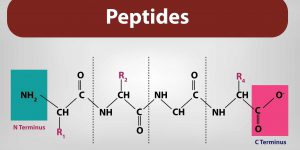
24
MayAn Overview of Functional Peptides
If we were to delve into the intricate world of biochemistry, we would come across the functionality of diverse molecules that perform essential roles in biological systems. One such class of molecules, peptides, are short chains of amino acid monomers linked by peptide bonds. These aren't just any ordinary molecules; these are functional peptides which undeniably contribute a significant part to our biological mechanisms.
Functional peptides are classified into several types depending on their unique characteristics and functions, with some intriguing examples being antimicrobial peptides, cell penetrating peptides, and MHC-peptide tetramers.
Antimicrobial peptides, also known as host defense peptides, serve as frontline warriors in our immune system. They are usually positively charged and amphipathic, allowing them to interact with the negatively charged bacterial membranes effectively. Antimicrobial peptides insert themselves into the bacterial membrane and disrupt its integrity, causing the insides of the bacteria to leak out, leading to cell death. Antimicrobial peptides' importance is projected in their widespread presence in almost all living organisms, from plants and animals to human beings.
In the medical field, antimicrobial peptides have aroused considerable interest as potential therapeutic agents. The antimicrobial peptide mechanism is being studied in depth for its ability to serve as an alternative to conventional antibiotics in an era of increasing antibiotic resistance. Antimicrobial peptides also demonstrate anti-inflammatory, anti-cancer, and wound healing properties, broadening their portfolio of potential applications.
Cell penetrating peptides, on the other hand, are a unique class of functional peptides that demonstrate a capacity to translocate across cell membranes. One of the most significant hurdles in drug delivery is getting therapeutic molecules inside cells. Many potential drugs cannot cross the cell membrane because of their size or polarity. Cell penetrating peptides provide a solution to this problem. They can form complexes with the therapeutic molecules, allowing them to enter cells together. This capability has the potential to revolutionize drug delivery, particularly for diseases that currently lack effective treatments.
Meanwhile, major histocompatibility complex (MHC) peptide tetramers are a prominent tool in immunology. They are synthetic molecules that can bind specifically to T-cell receptors, allowing the identification of individual T-cell populations that respond to a particular peptide antigen. With their utilization, researchers can track the body's immune response to infections, cancer, or vaccines, enhancing our understanding of immune responses and paving a way for improved vaccines and therapies.
Lastly, peptides show potential for modification. Peptide engineering, such as adding fatty acids or sugars, can further improve these molecules' features, providing them with additional stability or enhancing their interactions with receptors.
In conclusion, functional peptides, including antimicrobial peptides, cell penetrating peptides, and MHC-peptide tetramers, are fundamental components to our understanding of the biological world. Through their unique features and abilities, each peptide class serves essential functions in different aspects of biology and medicine. Their continuous study promises to provide insight into multiple physiological processes and guide therapeutics development, making functional peptides indispensable units of life's complex mechanisms.
